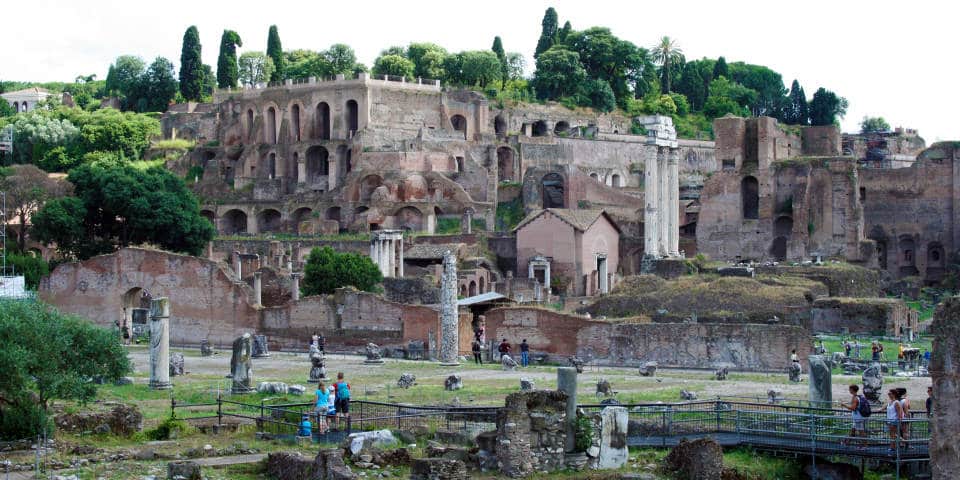

24786 views

| Tickets |
Buy tickets online: |
|---|---|
| Opening Hours |
Sunday:
-
Monday:
-
Tuesday:
-
Wednesday:
-
Thursday:
-
Friday:
-
Saturday:
-
|
| Closest bus stops |
|
| Closest subway stations | |
| Address | Palatine Hill, Roma |
Palatine Hill, or Monte Palatino in Italian, overlooks the Roman Forum and the Circus Maximus. Rome was founded here, and no visit to the Eternal City is complete without exploring its rich history.
The hill is central to the legend of Romulus and Remus and features a green area with wildflowers among ruins and the beauty of the Farnese Gardens. Additionally, it offers many panoramic views of Rome.
Contents
TogglePalatine Hill is significant because it was the birthplace of the Roman Empire under Romulus’s direction. It is also the site of the Lupercal Cave, where, according to legend, the she-wolf Lupa found and raised Romulus and Remus. This site has become a symbol of Rome.
The hill served as a residential district. It was believed that the air was cleaner at the top, reducing the nobility’s risk of catching diseases from the working class.
Moreover, Augustus, Marcus Antonius, and Cicero had homes on the Palatine
The Palatine consisted of three summits: the Germalus, the Veila, and the Palatium. The Palatium was the most important and later gave its name to the entire hill.
After the fall of the Roman Empire, the hill’s architecture also fell into ruin. It was restored in the Middle Ages into a stronghold but was abandoned over the years. During this period, almost the entire hill was owned by Cardinal Alessandro Farnese, who created a botanical garden on top of it.
The hill covers a large area with significant excavations.
Domus Flavia was built in 81 BC by Emperor Domitian as an official residence. Today, you can find extensive ruins of it.
The House of Augustus was his private residence. It features original colorful frescoes that have survived through time.
The House of Livia was built in the 1st century BC. It still has original mosaics and frescoes on the walls and ceilings.
Built-in 1550, Alessandro Farnese created his botanical gardens atop the ruins of the Palace of Tiberius (Palace of Caligula), constructed in the 1st century AD. It was one of the first botanical gardens in Europe, featuring many rare plants.
The Palatine Museum contains Roman sculptures, excavations, statues, frescoes, and mosaics from the ancient Roman elite.
Palatine Hill has many ruins from ancient palaces. Near the Circus Maximus, you will find remains of the Palace of Septimius Severus and the ruins of his baths. Severus was the Roman emperor between 193 and 211 AD.
North of the Palace of Septimius Severus is a stadium built alongside the Palace of Domitian. Over three centuries, the Palace, constructed in 81 AD, was considered Rome’s most enormous Palace. It had two wings: a private one (the Domus Augustana) and a public one (the Domus Flavia). Today, you can find the remains of both on Palatine Hill.
Archaeologists discovered remains of an early settlement that date back to the times of the first king of Rome, Romulus. The site is known as the Hut of Romulus.
Author: Artur Jakucewicz
This website uses cookies. For more info read the cookies policy
Rome.us © 2025. Created with love by Roman experts and guides.